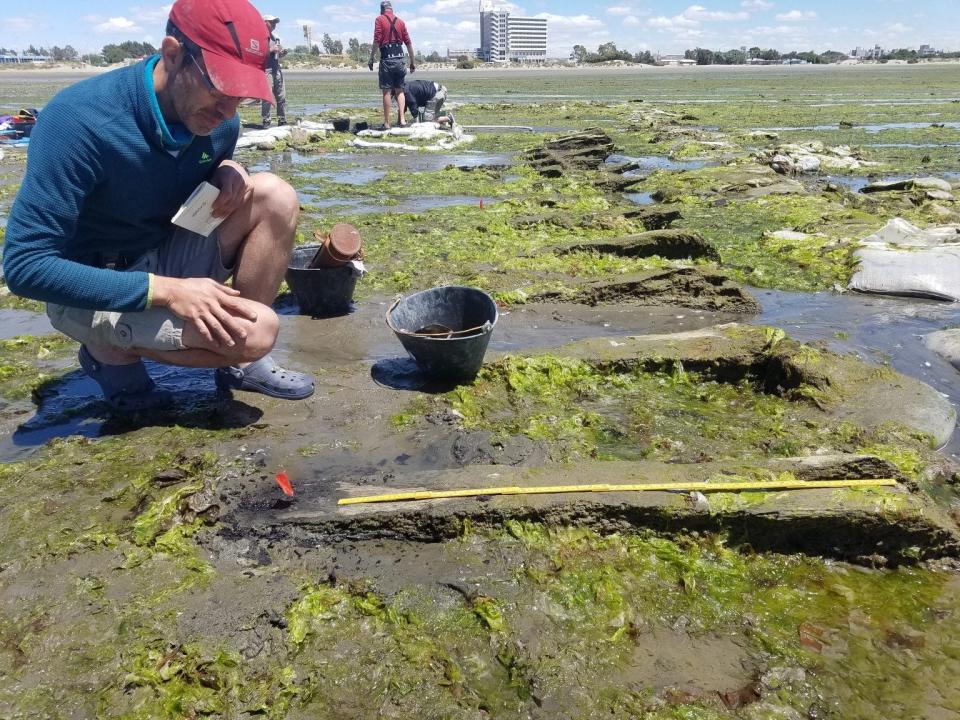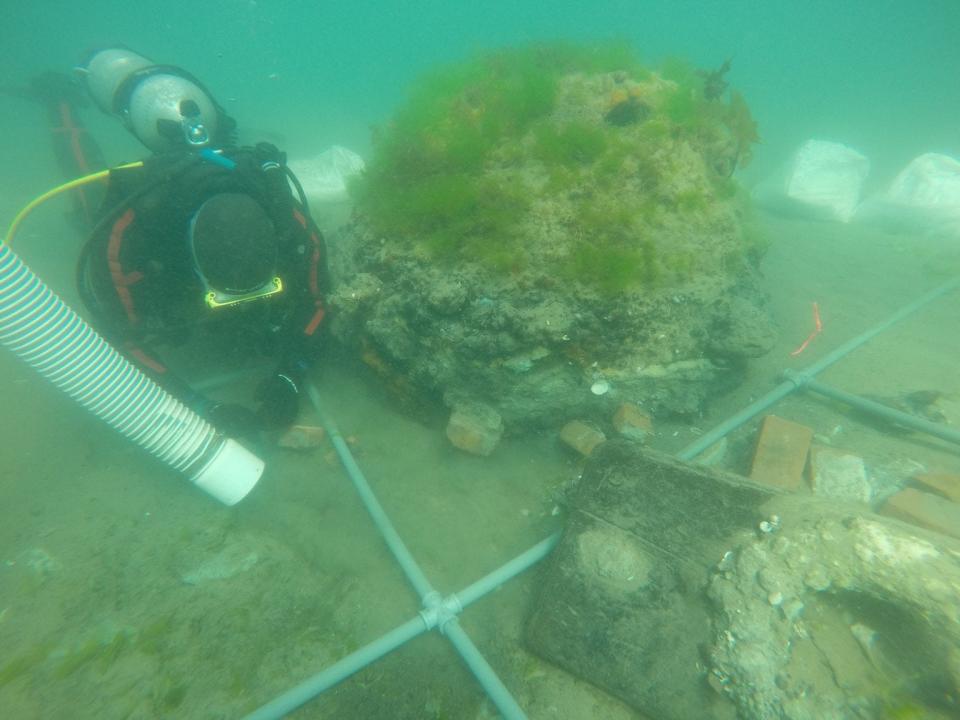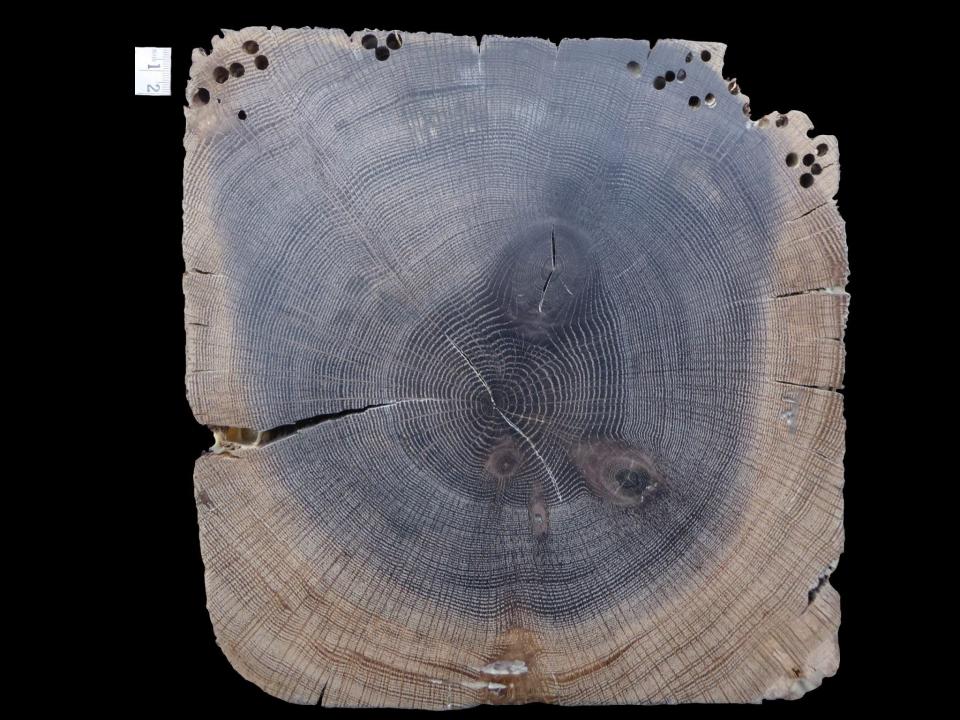Tree rings helped identify a 160-year old wreck off Argentina as lost Rhode Island whaler
A whaling ship that left Warren, Rhode Island more than 150 years ago likely sailed 10,000 miles from home before wrecking off southern Argentina, scientists now say.
After analyzing tree rings in the wooden remains of the shipwreck, scientists believe they probably identified the Dolphin, a whaling ship that was built and sailed out of Warren before it was lost in 1859.
“I cannot say with a hundred percent certainty, but analysis of the tree rings indicates it is very likely that this is the ship,” researcher Ignacio Mundo of Argentina’s Laboratory of Dendrochronology and Environmental History said in a press release from the Columbia Climate School at Columbia University in New York.

To help identify the ship, Mundo and scientists at the Columbia Climate School’s Lamont-Doherty Earth Observatory used a massive database of rings from North American trees to show that the ship's timbers were cut in New England and the southeastern United States shortly before the ship was built in 1850, according to Columbia. The findings were published this month in the journal Dendrochronologia.
“It’s fascinating that people built this ship in a New England town so long ago, and it turned up on the other side of the world,” Columbia tree-ring scientist Mukund Rao, a coauthor of the study, said.
History of the Dolphin whaling ship
Measuring 111 feet long and 325 tons, the Dolphin was launched from Warren on Nov. 16, 1850, Columbia said, referencing an unpublished manuscript by Warren historian Walter Nebiker. Nebiker described her as “probably the fastest square-rigger of all time.”
With whales becoming scarce by the time the Dolphin was sailing, ships from New England ports would sail farther and farther from home in search of the giant mammals, boiling their blubber onboard to produce oil to light lamps back home. Their journeys could take years.
'His name is mostly forgotten': Honoring James Rhea, Journal's first Black reporter
From a small New England town, the Dolphin voyaged to the Azores, around the Horn of Africa to the Seychelles, Zanzibar and Australia. The ship's last voyage left Warren on Oct. 2, 1858, and apparently ended in Golfo Nuevo, which, according to Columbia, is one of Patagonia’s few good natural harbors, a place "where whalers were known to put in."
Shipwreck's remains emerge, research to identify ship begins
In 2004, the wreck's remains emerged from the shifting sediment near Puerto Madryn in the western part of Golfo Nuevo. In 2006 and 2007, Cristian Murray of Argentina’s National Institute of Anthropology and Latin American Studies and other marine archaeologists began excavating. They found clues, including artifacts and historical documents from Argentina and Rhode Island, that pointed them to Warren and the Dolphin, but worked years without nailing down the ship's identity.
Two iron cauldrons and bricks found near the wreck suggested it was a whaler with a shipboard “try-works” for boiling down blubber. An Argentine historical account of a mariner named Luis Piedrabuena reported rescuing 42 crew members of the Dolphin. Researchers also found a letter from the Dolphin's master, Captain Norrie, to the ship's owners. Norrie wrote that the ship was destroyed when she “lay upon the rocks in the southwestern part of New Bay," an apparent reference to the Golfo Nuevo, Columbia said.

Still, other wrecks had been found in the bay, and researchers wanted more evidence.
In 2019, they turned to dendrochronology, a science that can date old wooden structures from measuring the annual growth rings in their timber. The science can also help researchers determine where the tree grew, since climates vary in different regions and produce differences in growth rings.
New Brown University initiative: RI scientists think they can predict and prevent future pandemics
The archaeologists contacted Mundo, but were initially reluctant when Mundo told them the examination would require using a chain saw to cut out two dozen cross sections of the ship's ribs and planking. After processing the samples in his lab, Mundo turned to Ed Cook, a pioneer in dendroarchaeology and founder of the Lamont-Doherty Tree Ring Lab of Columbia University.
Able to compare the wood from the wreck with a database of about 30,000 trees going back more than 2,000 years, the dendrochronologists determined that the ribs were made of white oak, probably from the northeastern United States. The "most striking" evidence, according to Columbia, was that the outermost rings on the oaks had been cut in 1849, coinciding with the ship's construction.

"To our knowledge, our study pioneered the use of dendrochronological methods for dating and establishing the provenance of a whaler's remains on the Atlantic coast of South America and encourages the feasibility for future dendroarchaeological research based on the large number of wooden shipwrecks that occurred in the region," the abstract in Dendrochronologia says.
The paper still "hedges its bets," according to the Columbia Climate School, saying it still could conceivably be some other American whaler from the same time.
Shipwreck not found: Final resting place of lost British ship Gaspee remains Narragansett Bay's secret
However, the press release also quotes Rao, a dendrochronologist, who says he is convinced it's the Dolphin.
“The archaeologists are more conservative — they prefer a slightly higher standard, and I don’t blame them,” he said. “It’s true we don’t have something like the ship’s bell. But for me, the story is there in the tree rings.”
(401) 277-7614
Be the first to know.
Sign up for our breaking news alerts
This article originally appeared on The Providence Journal: Lost Rhode Island whaler the Dolphin found as shipwreck off Argentina

